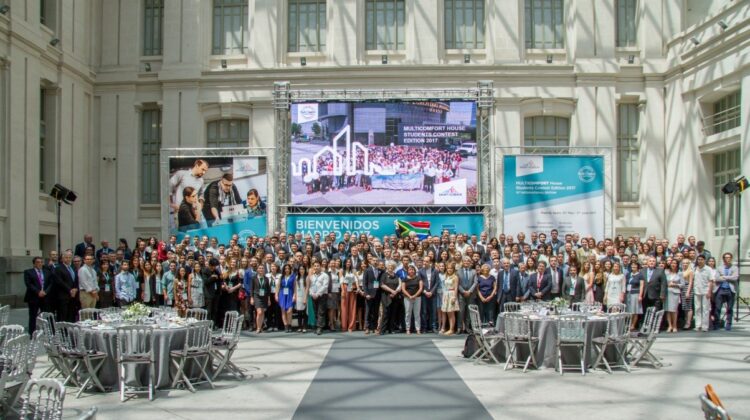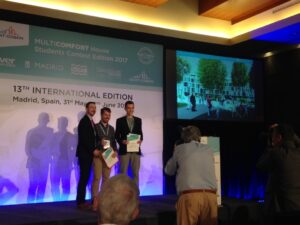
International architecture student contest – a way to open the ears and eyes of designers regarding sustainable indoor environments.
Architecture, the ‘‘mother of all arts,’’ is concerned with the design, arrangement, and manipulation of the physical properties of a space. However, architects almost exclusively consider the visual aspects of a structure. Only rarely do they consider the acoustic aspects.
These are the words by Barry Blesser and Linda-Ruth Salter from their book: Spaces Speak, Are You Listening? So when I give lectures to architects I often ask the audience, why it is so that the aesthetics are mainly considered and only sometimes acoustics? Maybe the two “sides” have a challenge understanding each other?
Books like Deaf Architects and Blind Acousticians? by Robert E. Apfel, is indeed trying to bridge this gap by providing a pedagogic approach to architectural acoustics. After many years in the field of acoustics working with both architects and acousticians, I think a lot of it comes down to that architects and designers simply lack knowledge about sound and acoustics. Most architect and design programmes at universities around the globe do not contain mandatory courses in acoustics. And if they do, these courses tend to be short and rather technical, and maybe not so inspirational.
Introducing sustainable indoor environments via a design contest

Therefore it is important to open the eyes – oh sorry, I mean the ears, of architecture students already early on in their academic development. Perhaps one way to go about it is to arrange architect competitions and contests where sound and acoustics is included, together with other comfort dimensions such as thermal and indoor air quality.
One contest like this is the Saint-Gobain MultiComfort House Student Contest organised by ISOVER and IZOCAM with the support of Ecophon and Saint-Gobain Glass. This contest consists of two stages: National Stages in all participant countries as well as the option to enter online for students in countries not organising National Stages. The best projects from each participant country are invited to the International Stage, which this year, was in Madrid 31 May-2 June.
The challenge:
The task for this year’s (13th International) edition of the students’ contest was developed in close collaboration with the Department of Architecture of Municipality of Madrid. The participants had to create sustainable architecture integrated into the urban space while responding to MAD-RE and Saint-Gobain MultiComfort criteria and taking into account the climatic conditions and regional context of Madrid.
As part of the contest, all students can participate in live and on-demand webinars on various topics. I had the pleasure of presenting two sessions on acoustics in the lead-up to submission day which is another great opportunity to hopefully sow some seeds of acoustic awareness.
Some facts from the contest:
Overall results:
- Over 1800 registered students
- From over 90 countries
- And more than 200 universities
Participation to International Stage, Madrid:
- Over 140 students and teachers
- From over 30 countries
It’s a win-win

I joined the international stage event and it was fantastic to see how eagerly the architect students from all over the world proudly (and sometimes nervously) presented their projects to the audience. Although the winners this year were Aiva Dorbe and Lauma Kalnina from Latvia (designed a green belt around two blocks which exploits the sunlight depending on position and orientation), one could actually say that all participants were winners somehow. What they gain is knowledge regarding sustainable design and indoor environmental aspects, including acoustics, and international contacts and friends. Speaking to some of the students and professors, they were rather aware themselves which projects that were potential top candidates to be winners. And they learnt something new about acoustics too.
I truly believe it is important to educate and inform architecture students at an early stage on how sound can affect people and what design options and opportunities they have to create good, sustainable indoor environments. In addition, education about acoustics needs to be FUN and inspirational, not only technical. To bring in soundscaping perspectives and aural architecture can be more engaging ways to increase their interest in sound. A contest like the one mentioned here seems to me a good way of taking on this mission.
Further information:
Follow Carsten on Twitter:
Follow @AcousticCarsten

